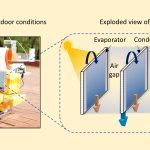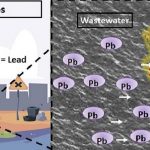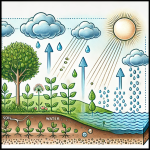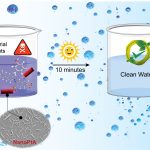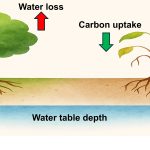
Access to clean and safe drinking water is a fundamental human right. Since contamination of drinking water sources is a serious public health hazard, the World Health Organisation (WHO) has set specific limits for the presence of toxic pollutants in water. If the pollutant levels exceed this limit, water is considered unfit for consumption. Mercury is one such heavy metal pollutant that can damage the kidneys and the brain. Although traditional spectroscopy techniques can accurately determine mercury concentration at the WHO’s guideline value (6 mg/litre), they require sophisticated equipment and handling by trained experts.
Researchers at IISc and Jawaharlal Nehru Centre for Advanced Scientific Research (JNCASR) have worked to develop a sensitive, portable and cost effective etched Fiber Bragg Grating sensor (eFBG) which can be used in practical settings. The surface of this sensor was coated with cysteine conjugated naphthalene diimide (CNC) bolaamphiphile molecules.
The interaction between CNC and mercury gives the specificity to the sensor for it to be capable of detecting minute mercury concentrations (up to 0.0000003 mg/litre or 10 million times less than the hazardous limit) in test samples. The sensor gave promising results for regular tap water samples too. It has the potential for real-time testing of mercury contamination in water sources.

